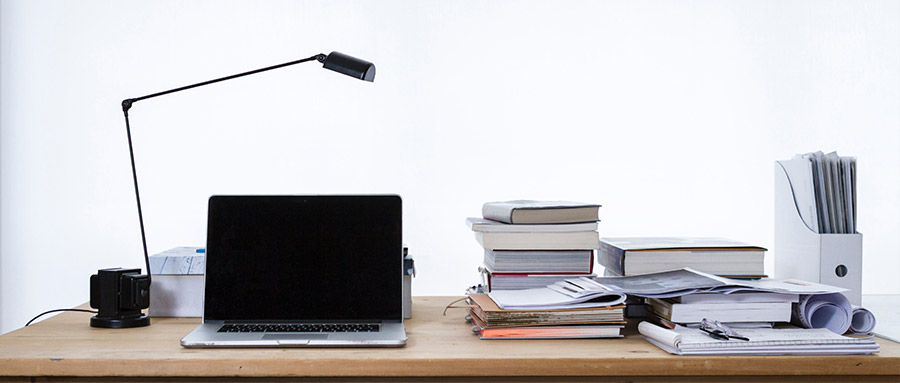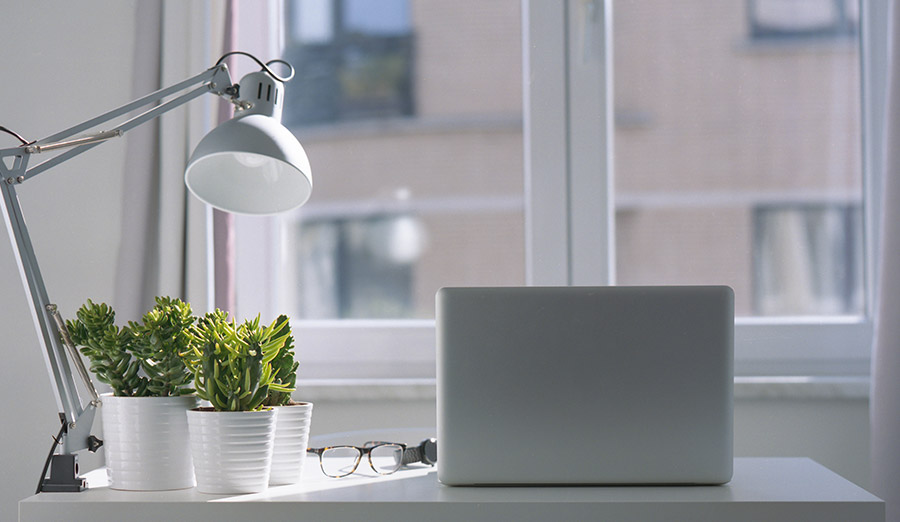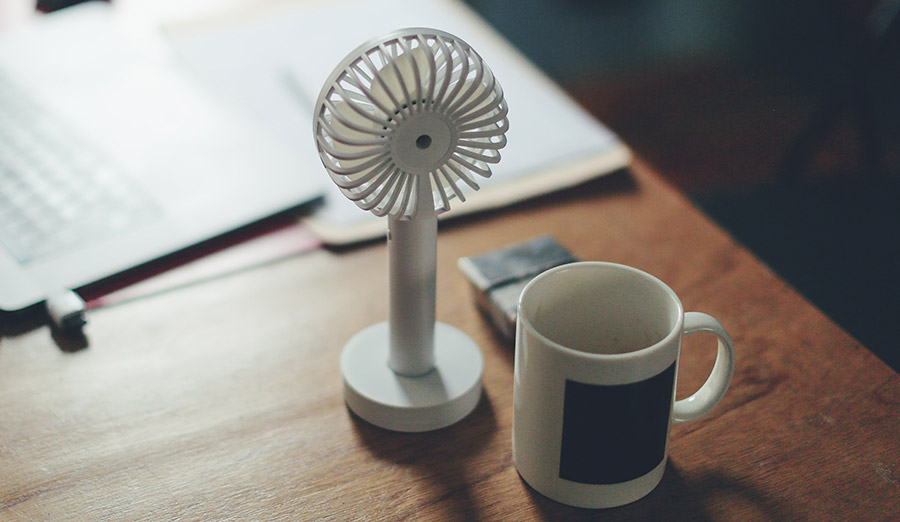News & Events
Create a Study Room
Create a Study Room
By: Melanie Bryant

Creating a study room can be a daunting task. Studying for a test or working on an assignment requires a lot of effort. Even if you do the majority of your studying on a computer, the right study room can help boost your productivity. The best study room will help you maximize your efforts without distracting you.
What Makes a Good Study Room
Every student would love to have a study room built especially for their needs. If you search “study room” on Pinterest you’ll find hundreds of adorable nooks and perfect rooms carefully designed using feng-shui. In the real world, you probably don’t have an entire room in your house dedicated to a study room. Most of us have to find an available corner, couch, or table to transform into a study room. You may not even have a spot your can claim on a permanent basis. That’s okay! It turns out that is no one perfect study room. In fact, the best study room is one that can adapt to your needs (Lippman, 2010).
Work Mode
The important aspect of a study room is that it gets you into work mode. Researchers have determine that task performance improves when someone enters into a “hyperfocus” work mode state (Ashinoff & Abu-Akel, 2021). A carefully controlled study room will support getting into work mode and will allow you to accomplish more with less effort. Trying to push yourself in an environment that is not conducive to studying can cause frustration, anxiety, and exhaustion.
A good study room has the following characteristics:
- Defined Boundaries
- Reproducible Context Clues
- Seclusion
- Natural Lighting
- Environment Control
Claim Your Study Room

The first characteristic inherent in a good study room is well defined boundaries. You need to determine what is and is not part of your study room. It’s worth it to note that your study room does not need to be an actual room. A small desk against the wall, a lap desk, or even the dining room table can be your study room. The important thing is to determine where your study room is going to be and what elements it encompasses.
It’s also possible that your study room is not a permanent fixture. For example, if you are using a lap desk you might store it in a closet or behind the sofa when it is not being used. That’s okay! You can still work and study at a study room that only exists when it’s needed. The important thing is that you and the rest of your household knows that your study room exists and respects the boundaries.
A Laptop is Not a Study Room
The laptop computer is not in-and-of-itself a study room. While you may do the majority of your work on the laptop, you need something to rest it on besides your own lap. This will help you to mentally prepare the boundaries of what is and is not your study room and help you get into work mode.
Use the Same Study Room Each Time
If your goal is fact memorization, there are some studies that indicate changing your environment might help with retention (Imundo, 2019). However, our goal is to create an area that uses reproducible context clues to get you into work mode. Context clues are elements in your environment that you subconsciously associate with other items. In short, we’re going to trick your brain into work mode by using the same study room each time. Quickly you will start to associate work with the study room environment. This will help minimize the effect of distractions and make it easier and faster to get to work.
Minimize Distractions

The next important aspect of a good study room is seclusion. Your study room needs to be removed from any potential distractions. It is very difficult to get into work mode when you are constantly being interrupted by non-work items and events. Obviously, this is easier said than done. You may have potential distractions that cannot simply be “turned off” such as small children. The idea is to control what you can to remove interruptions.
Common Distractions
- Other people:
- Having conversations,
- Doing housework
- Eating
- The Internet:
- Checking your email
- Browsing Facebook
- Reading blogs
- Your phone:
- Texting
- Social media
- Candy Crush
- Planning:
- Making sure your space is perfect
- Organizing your materials
- Obsessing over file structure
- Electronics:
- Video Games
- Television / Movies
- Music
- Food:
- Drinks
- Snacks
Use Natural Lighting

Natural light has many benefits to human beings. In a 2003 study it was discovered that lighting conditions can influence the performance of individuals. Daylight is an effective stimulant to the human visual system (Boyle, et al., 2003). Effectively, that means that natural light keeps you alert and awake. Studying near a window can help you from getting drowsy while you work. Exposure to daylight can also generate Vitamin D and provide additional psychological benefits (Kaplan, 1993). In short, sunlight keeps you mentally and physically healthy.
Of course, you may not have the luxury of being able to choose to study during daylight hours. What are you supposed to do if your study time is after dinner or early in the morning? Don’t fret. Try getting a little exercise before studying. Moving the large joints in your shoulders and legs can help improve your mood and get you in the right head-space for studying. You might also consider investing in a sun lamp if you find you spend most of your life indoors without access to natural light.
Avoid Eyestrain
When you study or work at a computer for a long period of time you may start to experience some eyestrain. Medical professionals call this Computer Vision Syndrome (CVS). Studies have shown that the majority of computer workers experience some eye or vision symptoms (Chiemeke, et al., 2007). In 2013 a study of 795 Malaysian university students found 90% of them experienced symptoms of CVS.
Here are some tips to avoid and treat Computer Vision Syndrome
Use Proper Lighting. Natural lighting is a great idea but position windows to the side whenever possible instead of directly in front or behind you. Consider using “soft white” bulbs in your lamps and overhead lighting. Ensure that the overall room illumination is more than three times brighter than the screen (Chiemeke, et al., 2007)
Exercise Your Eyes. Try the 20-20-20 rule. Every 20 minutes of computer screen work, look at an object at least 20 feet away for 20 seconds. This can help strengthen the muscles in your eyes. It will keep them from getting tired and overworked.
Use the Right Angle. The recommended viewing distance between the user and the computer is about 20-40 inches. In addition the correct angle to view a computer is less than 15 degrees. Getting as close to that as possible is key to avoid unnecessary strain.
Control the Study Room Environment

A good study room is comfortable, but not too comfortable. If you are uncomfortable you will find it difficult to concentrate and may subconsciously find reasons not to study. Choose a place where you will not be distracted physically. Avoid uncomfortable and distracting furniture, temperatures, sounds, and visuals.
Furniture
Prolonged sitting on ill-fitted furniture and resulting bad posture can cause musculoskeletal disorders in students (Parvez, 2019). The right desk and chair height can make a big difference in preventing wrist, back, and neck strain. Your best option is to use an adjustable chair and desk. Then, move them to your specific needs. You can use this calculator to determine your ideal desk height.
Temperature
Make sure your study room is a comfortable temperature. A 2016 study showed that passive exposure to environmental extremes of heat and cold can have a detrimental effect on your ability to think clearly (Taylor et al., 2016). A study testing students in different climate-controlled rooms found students performed best at around 73º (Almaqra, et al., 2019).
Music & Sound
Should you listen to music while you study? There have been numerous studies on whether or not background music affects learning. The results of these studies are varied and often contradictory.
Human brains are wired to be sensitive to extreme contrasts. That means when we see or hear something unexpected it will grab our attention. Unexpected and loud sounds in your study room will pull focus from your task and cause you to break your concentration. Expected sounds can help with concentration. They put your mind at ease and can help to mask unexpected sounds in your environment (Lehmann & Seufert, 2017).
What does that mean for you? If your environment is already quiet, you might be better off without music. If your environment includes a lot of potential distractions consider calm music. You might also get good results with nature sounds.
Supplies
As Abraham Lincoln once famously said, “Give me six hours to chop down a tree and I will spend the first four sharpening the axe.” This applies to studying too! Before you begin ensure that all your supplies are within easy reach. You don’t want to have to break your concentration to look for a pen or plug in your laptop charger. When choosing a study room look for something near enough to your supplies that you won’t have to adjust your space when you need something.
Get Started
Your study room is more than just a physical location. Utilize context clues to create seclusion and promote concentration. Now that you know what makes an effective study room it’s time to evaluate your options. Choose a study room you can easily replicate whenever you need to study and only use that exact space for studying. Make yourself comfortable, but not TOO comfortable, and get to work!
Works Cited
Almaqra, A., Almuqri, M., Alshathri, A., Aloraini, A., Alrehaili, Y., Bin-Mubarak, A., … & Ragab, A. (2019, January). Effect of caffeine consumption and air temperature on student performance. In Proceedings of the 10th International Conference on E-Education, E-Business, E-Management and E-Learning (pp. 250-254).Ashinoff, B.K.,
Abu-Akel, A. Hyperfocus: the forgotten frontier of attention. Psychological Research 85, 1–19 (2021). https://doi.org/10.1007/s00426-019-01245-8
Chiemeke, S. C., Akhahowa, A. E., & Ajayi, O. B. (2007, July). Evaluation of Vision-Related Problems amongst Computer Users: A Case Study of University of Benin, Nigeria. In World Congress on Engineering (Vol. 1, pp. 2-6).
Choi, HH., van Merriënboer, J.J.G. & Paas, F. Effects of the Physical Environment on Cognitive Load and Learning: Towards a New Model of Cognitive Load. Educ Psychol Rev 26, 225–244 (2014). https://doi.org/10.1007/s10648-014-9262-6
Imundo, M. (2019, November 18). Mythbusters: Studying in the same place, at the same time, every day is good for learning. Psychology In Action. https://www.psychologyinaction.org/psychology-in-action-1/2019/11/2/mythbusters-studying-in-the-same-place-at-the-same-time-every-day-is-good-for-learning
Kaplan, R. (1993). The role of nature in the context of the workplace. Landscape and urban planning, 26(1-4), 193-201.
Lehmann, J., & Seufert, T. (2017, October 13). The influence of background music on learning in the light of different theoretical perspectives and the role of working memory capacity. Retrieved from https://www.frontiersin.org/articles/10.3389/fpsyg.2017.01902/full
Lippman, P. (2010), “Can the Physical Environment Have an Impact on the Learning Environment?”, CELE Exchange, Centre for Effective Learning Environments, No. 2010/13, OECD Publishing, Paris, https://doi.org/10.1787/5km4g21wpwr1-en.
Parvez, M. S., Rahman, A., & Tasnim, N. (2019). Ergonomic mismatch between students anthropometry and university classroom furniture. Theoretical Issues in Ergonomics Science, 20(5), 603-631.
Here’s how music can help you concentrate. (2020, July 29) Retrieved from https://www.healthline.com/health/does-music-help-you-study
Reddy, S. C., Low, C. K., Lim, Y. P., Low, L. L., Mardina, F., & Nursaleha, M. P. (2013). Computer vision syndrome: a study of knowledge and practices in university students. Nepalese journal of Ophthalmology, 5(2), 161-168.
Taylor, L., Watkins, S. L., Marshall, H., Dascombe, B. J., & Foster, J. (2016). The impact of different environmental conditions on cognitive function: a focused review. Frontiers in physiology, 6, 372.
